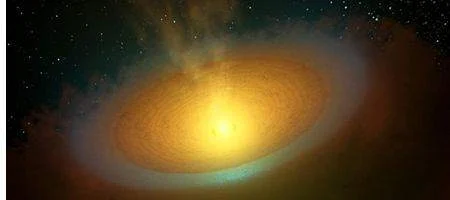Astronomers using the European Space Agency’s Herschel Space Telescope have spotted a star that appears to be making new planets, despite being well past the age at which it would be expected to do so.

The disk of material surrounding TW Hydrae, which is 10 million years old and 176 light years away, may be massive enough to make even more planets than we have in our own solar system.
“We didn’t expect to see so much gas around this star,” says Edwin Bergin of the University of Michigan. “Typically stars of this age have cleared out their surrounding material, but this star still has enough mass to make the equivalent of 50 Jupiters.”
The team’s developed a new, more precise method for weighing planet-forming disks that can directly probe the gas that typically goes into making planets.
“Before, we had to use a proxy to guess the gas quantity in the planet-forming disks,” says Paul Goldsmith, the NASA project scientist for Herschel at NASA’s Jet Propulsion Laboratory. “This is another example of Herschel’s versatility and sensitivity yielding important new results about star and planet formation.”
Using Herschel, scientists were able to analyze light coming from TW Hydrae and pick out the spectral signature of hydrogen deuteride gas, which emits light at the far-infrared wavelengths that Herschel is equipped to see. This enabled astronomers to measure the levels of hydrogen deuteride and obtain the weight of the disk with the highest precision yet.
“The new results are another important step in understanding the diversity of planetary systems in our universe,” says Bergin. “We are now observing systems with massive Jupiters, super-Earths, and many Neptune-like worlds. By weighing systems at their birth, we gain insight into how our own solar system formed with just one of many possible planetary configurations.”






